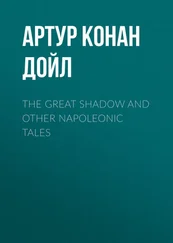1.2.5 Non‐nutrient Nanofertilizers
There are other nanoparticles which are not classified as plant nutrients but potentially have positive impact on plants. These nanoparticles mainly include CNTs, chitosan (Cs), cerium(IV) oxide (CeO 2), silicon dioxide (SiO 2), and titanium dioxide (TiO 2). Although they are not of nutritional need to the plant, but they can improve growth and yield (Adisa et al. 2019). CNTs were found to increase shoot length of date palm ( Phoenix dactylifera ) at 0.05–0.1 mg/L (Taha et al. 2016) and promote growth of tobacco plants at 5–500 mg/L (Khodakovskaya et al. 2012). Studies have showed that Cs nanoparticles improve seed germination, enhance plant growth, increase photosynthesis, and improve crop yield (Adisa et al. 2019). Van et al. (2013) treated Robusta coffee plants with nanochitosan under greenhouse conditions which resulted in increased chlorophyll content and photosynthetic rate as well as increased nutrient accumulation as compared with untreated plants. Cu‐chitosan nanoparticles increased seedling growth, fresh, and dry mass of tomato plants as compared with untreated plants (Saharan et al. 2015). Pretreatment of maize seeds with Cu‐chitosan nanoparticles improved seed germination and growth parameters as compared with untreated control (Saharan et al. 2016).
In a similar manner, CeO 2nanoparticles reported to increase shoot biomass, growth, and grain yield of wheat plants relative to untreated plants (Rico et al. 2014). A similar finding was recorded for shoots of barley with CeO 2nanoparticles (Rico et al. 2015). Foliar application of SiO 2to cucumber ( Cucumis sativus ) resulted in increased plant height, biomass, growth and yield as compared with untreated control (Yassen et al. 2017). Application of SiO 2to strawberry ( Fragaria × ananassa ) increased macronutrients and micronutrients uptake (K, Ca, Mg, Fe, Mn, and Si) in plants as compared with untreated plants (Yousefi and Esna‐Ashari 2017). TiO 2nanoparticles have been tested on various crops such as spinach (Hong et al. 2005), lettuce (Zahra et al. 2015), tomato (Tiwari et al. 2017), Lemna minor (Song et al. 2012), watermelon (Wang et al. 2013), wheat (Feizi et al. 2012), and mung beans (Raliya et al. 2015). These studies conclude that TiO 2nanoparticles were able to increase plant growth and yield, increase chlorophyll content, enhance photosynthetic rate, and improve germination rate. But the plant responses depend on plant type, nanoscale properties, and concentrations and the method of application (Raliya et al. 2018).
1.2.6 Advantages of Nanofertilizers
The following are a list of advantages of using nanofertilizers as described by León‐Silva et al. (2018) and presented in Bajpai et al. (2020):
1 Decreases the need for fertilizers and production costs.
2 When applied in soil, reduces nutrient loss by leakage and soil drainage.
3 Synthesis can be done eco‐friendly.
4 Improvement of nutrient uptake and controlled release of plant nutrients
5 Improve condition and bioavailability of essential nutrients in soil.
6 Less negative effects and toxicity especially when used in low concentrations.
7 The ability to improve product quality.
1.2.7 Limitations of Nanofertilizers
The successful use of some nanofertilizers for improved crop productivity was demonstrated. But the deliberate introduction of this technology in farming could lead to unintended nonreversible results. In this scenario, the use of this technology in farming productivity can be restricted by new environmental and unintentional health issues. Phytotoxicity of nanomaterials is also a problem because many plants react in a dose‐dependent manner to different nanomaterials. Consequently, before market implementation, it is extremely necessary to look at the advantages of nanofertilizers and their limitations (Zulfiqar et al. 2019).
Especially because of their small size with enhanced surface area, nanomaterials are very reactive. Often of importance are the reactivity and volatility of these materials. This raises safety concerns for farm workers who may be exposed to the use of xenobiotics during application (Nair 2018). Given the anticipated benefits, the efficacy and effectiveness of these new fertilizers must therefore be examined. Indeed, their acceptance of sustainable agriculture is limited to their acceptance in terms of transport, toxicity, and availability and unintended environmental consequences on the exposure to biological systems (Nair 2018; Zulfiqar et al. 2019).
Risk assessment and the risk identification of nanomaterials including the assessment of the life cycle of nanomaterials or fertilizers is critical and to the prioritization of toxicological research. This is particularly valid with regard to nanoparticles accumulation in plants and potential health issues. In addition, the use of nanofertilizers made of nanomaterials created serious concerns about human and food safety (White and Gardea‐Torresdey 2018). Some of the studies have shown the phytotoxic effects of nanoparticles on plants, the phytotoxicity of nanoparticles is dependent on the type of plant species, mode of application, time of exposure, and concentration and type of the applied nanoparticles. It is important to study the degree of toxicity of each nanoparticle to any given crop so as to understand translocation and accumulation of nanofertilizers and possible interactions with soil or plant compounds and also the accumulation of nanoparticles in different plant tissues (White and Gardea‐Torresdey 2018; Zulfiqar et al. 2019).
1.3 Nanopesticides and Nanoantimicrobials
Plant pests and pathogens are among the biotic factors which contributed a yearly loss of about 20–40% in crop plants. The strategies available for the management of plant diseases predominately involve the use of toxic pesticides which are harmful to humans and the environment. Nanotechnology can provide advantages over conventional pesticides because of their ability to reduce toxicity, the improvement of shelf‐life, and the increase of solubility of poor water‐soluble pesticides, all of this could have positive impacts on the environment (Worrall et al. 2018). There are two directions through which nanoparticles can be used for plant disease managements either as nanoparticles alone or as nanocarriers for insecticides, bactericides, fungicides, or antivirals (Worrall et al. 2018).
Insecticides may be used against insects' larvae, large, or adult insects and can kill insects in different stages of their growth and development. Insects are a class of invertebrates, including insect pests that kill crops and infect stored grains. Applying nanoscale pesticides can therefore be helpful for managing insect pests in farming, without damaging nature (Jampílek and Král'ová 2017). Kah and Hofmann (2014) pointed out that aluminum nanoparticles acted as an insecticidal dust against two insect species, i.e. Sitophilus oryzae (L.) and Rhyzopertha dominica , (F.) which are major pests of stored grains. Chitosan nanoparticles have shown effectiveness against cotton leafworm ( Spodoptera littoralis ), oleander aphid ( Aphis nerii ), nymphs of the spear psylla ( Cacopsylla pyricola ), and the root‐knot nematode ( Meloidogyne javanica ) (Malerba and Cerana 2016). Kumar et al. (2014) used a nanoformulation of imidacloprid – sodium alginate to Bhendi plants and managed to control leafhoppers and Jassids (sucking pests). EL‐bendary and El‐Helaly (2013) used silicon nanoparticles to control the neonates of S. littoralis (leaf worm) in tomato plants.
Читать дальше












